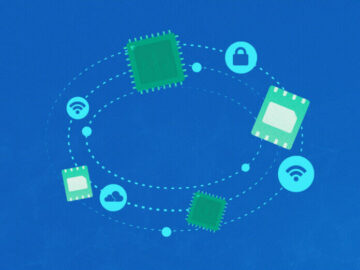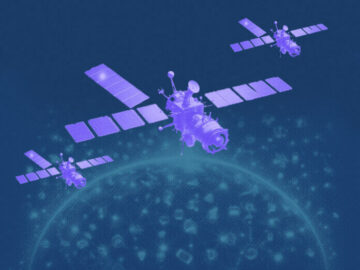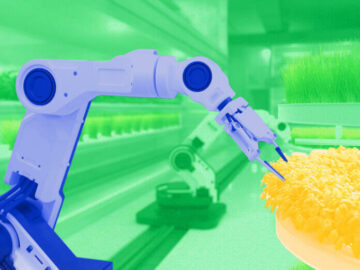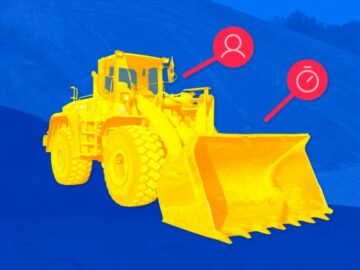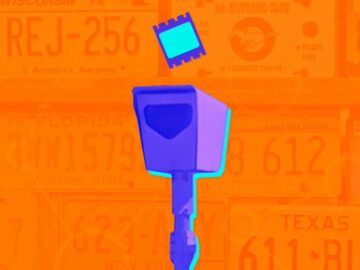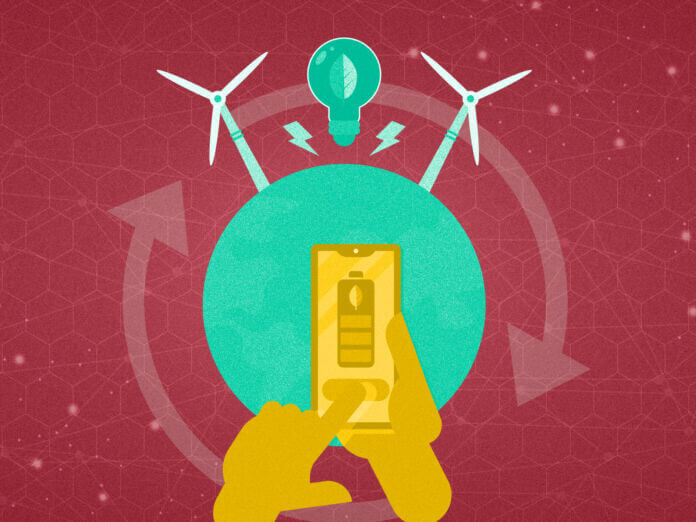
Dynamic line rating (DLR) technology uses IoT to determine safe energy transmission limits based on immediate, real-world conditions. It’s a marked improvement on the static line ratings—conservative guesses about how much energy can safely move through a power line—that dominate legacy power grid management.
Why does dynamic line rating matter? Because by unlocking the existing power grid’s hidden efficiencies, DLR clears the space you need to bring renewable energy sources online. As grid operators move toward a more sustainable future, DLR will become an important part of their adaptation toolkit.
Here’s an introduction to DLR, complete with tips for grid operators interested in bringing the technology to their organizations.
Why We Need DLR: Understanding Transmission Congestion
Power transmission lines can only safely carry so much energy at a time. After all, electricity generates heat: Run too much through a line and conductors start to fall apart.
The upper limit of current that a conductor can carry, while remaining within its safe temperature rating, is called the current-carrying capacity, or the ampere capacity, or—most commonly—ampacity.
When a line approaches its ampacity rating, grid operators have no choice but to pull back on power delivery. That leads to transmission congestion, a lack of ampacity in lines that carry the lowest-price electricity—including renewable energy sources. To meet consumer demand, grid operators use less congested lines, which are usually associated with higher-cost energy.
Transmission congestion is inefficient, expensive, and on an upward trajectory. Here’s just one example from North America:
- In the United States, Regional Transmission Organizations (RTOs) and Independent System Operators (ISOs) provide about 60 percent of the nation’s electricity.
- In 2022, the cost of grid congestion for U.S. RTOs and ISOs rose by 56 percent, reaching an estimated $20.8 billion.
- The year before, the price of congestion had doubled among these providers.
Congestion continues to be a problem for these markets. Transmission system operators (TSOs) and distribution system operators (DSOs) in Europe are facing the same challenge. So are grid operators across the globe.
But the real price of congestion isn’t just financial. It’s also environmental. As new wind farms, hydroelectric plants, and solar installations come online, they’ll increase demand on existing power grids.
In other words, to actually use the renewable energy we create, we’ll have to get around the problem of congestion. Grid-enhancing technologies (GETs) like dynamic line rating (DLR) provide the means to do so.
How DLR Creates a More Efficient Power Grid
The International Renewable Energy Agency (IRENA) estimates that most grid operators can overcome their operational challenges with line rating increases of just 5 percent to 20 percent. Dynamic line rating has delivered even higher efficiency boosts in real-world implementations:
- Belgian TSO Elia boosted line current by 30 percent with DLR.
- The New York Power Authority found that DLR would reliably increase line capacity by up to 25 percent.
- Canadian electricity provider AltaLink found that DLR would provide a line-rating increase of 72 percent over static ratings up to 95 percent of the time.
How does DLR achieve higher ampacity without changing anything about transmission lines themselves? It provides true capacity limits based on the environmental conditions in the moment.
Static line ratings, on the other hand, play it safe: They assume the temperature is higher than it may be, that the wind is blowing less, or that lines are sagging more than they actually are. This was necessary when operators couldn’t track all the variables that affect thermal limits for transmission lines.
But IoT systems can track all these conditions. True thermal limits for transmission lines change with the following variables:
- Wind conditions (speed, direction, etc.)
- Ambient temperature
- Precipitation and cloud cover
- Solar radiation levels
With IoT sensors installed directly onto power line infrastructure, it becomes possible to generate dynamic line ratings based on all of these factors. With the right DLR system—one that factors weather predictions into the equation—you can even plan ahead for optimal transmission times.
An IoT DLR system has the added benefit of being relatively quick and easy to deploy. You don’t have to build new power lines or disconnect your current ones. There’s no effect on supporting infrastructure. Grid operators don’t even have to interrupt service to install these systems.
Because of these advantages, DLR is low-hanging fruit for grid operators who need more capacity. And that extra capacity is a key step toward the green energy grid of the future.
- SEO Powered Content & PR Distribution. Get Amplified Today.
- PlatoData.Network Vertical Generative Ai. Empower Yourself. Access Here.
- PlatoAiStream. Web3 Intelligence. Knowledge Amplified. Access Here.
- PlatoESG. Carbon, CleanTech, Energy, Environment, Solar, Waste Management. Access Here.
- PlatoHealth. Biotech and Clinical Trials Intelligence. Access Here.
- Source: https://www.iotforall.com/revolutionizing-energy-efficiency-with-iot-and-digital-twins
- :has
- :is
- $UP
- 1
- 20
- 2022
- 25
- 72
- 8
- a
- About
- Achieve
- across
- actually
- adaptation
- added
- advantages
- affect
- After
- agency
- ahead
- All
- also
- america
- among
- an
- and
- anything
- apart
- approaches
- ARE
- around
- AS
- associated
- assume
- At
- authority
- back
- based
- BE
- because
- become
- becomes
- before
- being
- benefit
- Blowing
- Boosted
- boosts
- bring
- Bringing
- build
- but
- by
- called
- CAN
- Capacity
- carry
- challenge
- challenges
- change
- changing
- choice
- Cloud
- come
- complete
- conditions
- conductor
- congestion
- consumer
- continues
- Cost
- create
- creates
- Current
- delivered
- delivery
- Demand
- deploy
- Determine
- digital
- Digital twins
- direction
- directly
- distribution
- do
- does
- dominate
- Dont
- doubled
- dynamic
- easy
- effect
- efficiencies
- efficiency
- efficient
- EIA
- electricity
- energy
- energy efficiency
- environmental
- estimated
- estimates
- etc
- Europe
- Even
- example
- existing
- expensive
- extra
- facing
- factors
- Fall
- Farms
- financial
- following
- For
- found
- from
- future
- generate
- generates
- get
- gets
- globe
- Green
- green energy
- Grid
- had
- hand
- Have
- Hidden
- higher
- How
- HTTPS
- immediate
- implementations
- important
- improvement
- in
- Increase
- Increases
- independent
- inefficient
- Infrastructure
- install
- installed
- interested
- International
- into
- Introduction
- iot
- IT
- ITS
- jpg
- just
- just one
- Key
- Lack
- Leads
- Legacy
- less
- like
- LIMIT
- limits
- Line
- lines
- management
- marked
- Markets
- Matter
- max-width
- May..
- means
- Meet
- moment
- more
- more efficient
- most
- move
- much
- Nations
- necessary
- Need
- New
- New York
- no
- North
- north america
- of
- on
- ONE
- ones
- online
- only
- onto
- operational
- operators
- optimal
- or
- organizations
- Other
- over
- Overcome
- part
- percent
- PHP
- plan
- plants
- plato
- Plato Data Intelligence
- PlatoData
- Play
- possible
- power
- Power grid
- Predictions
- price
- Problem
- provide
- provider
- providers
- provides
- Quick
- Radiation
- rating
- ratings
- reaching
- real
- real world
- regional
- relatively
- remaining
- Renewable
- renewable energy
- Revolutionizing
- right
- ROSE
- Run
- s
- safe
- safely
- same
- sensors
- service
- So
- solar
- Sources
- Space
- speed
- start
- States
- static
- Step
- Supporting
- system
- Systems
- Technologies
- Technology
- than
- that
- The
- The Future
- their
- themselves
- thermal
- These
- they
- this
- Through
- time
- times
- tips
- to
- too
- toolkit
- toward
- track
- trajectory
- transmission
- true
- Twins
- u.s.
- understanding
- United
- United States
- unlocking
- upward
- use
- uses
- usually
- variables
- was
- we
- Weather
- when
- which
- while
- WHO
- will
- wind
- wind farms
- with
- within
- without
- words
- would
- year
- york
- you
- Your
- zephyrnet

